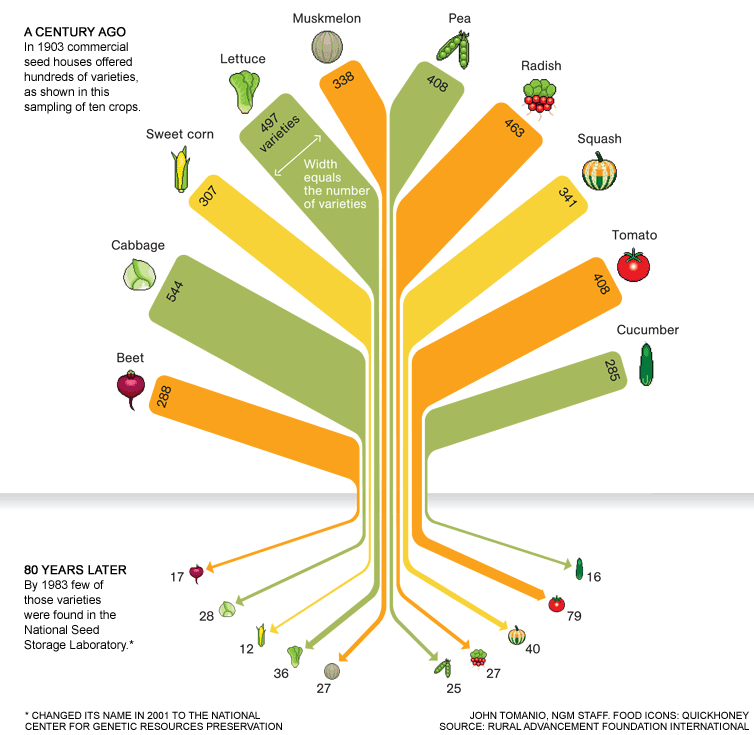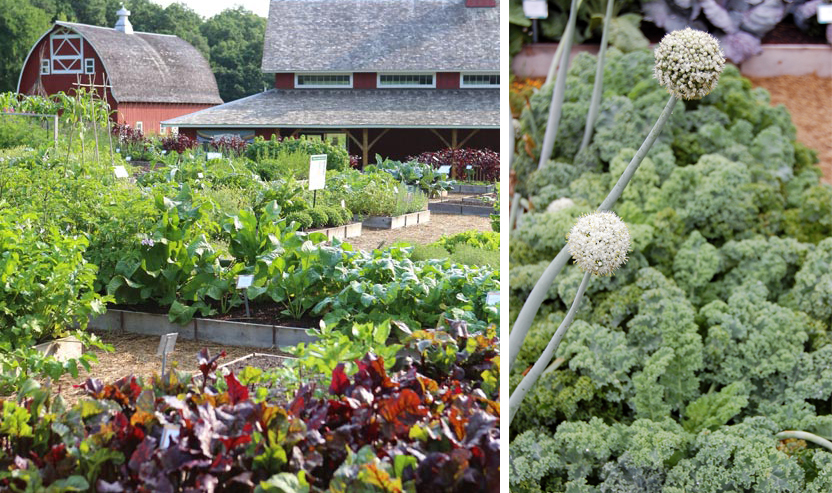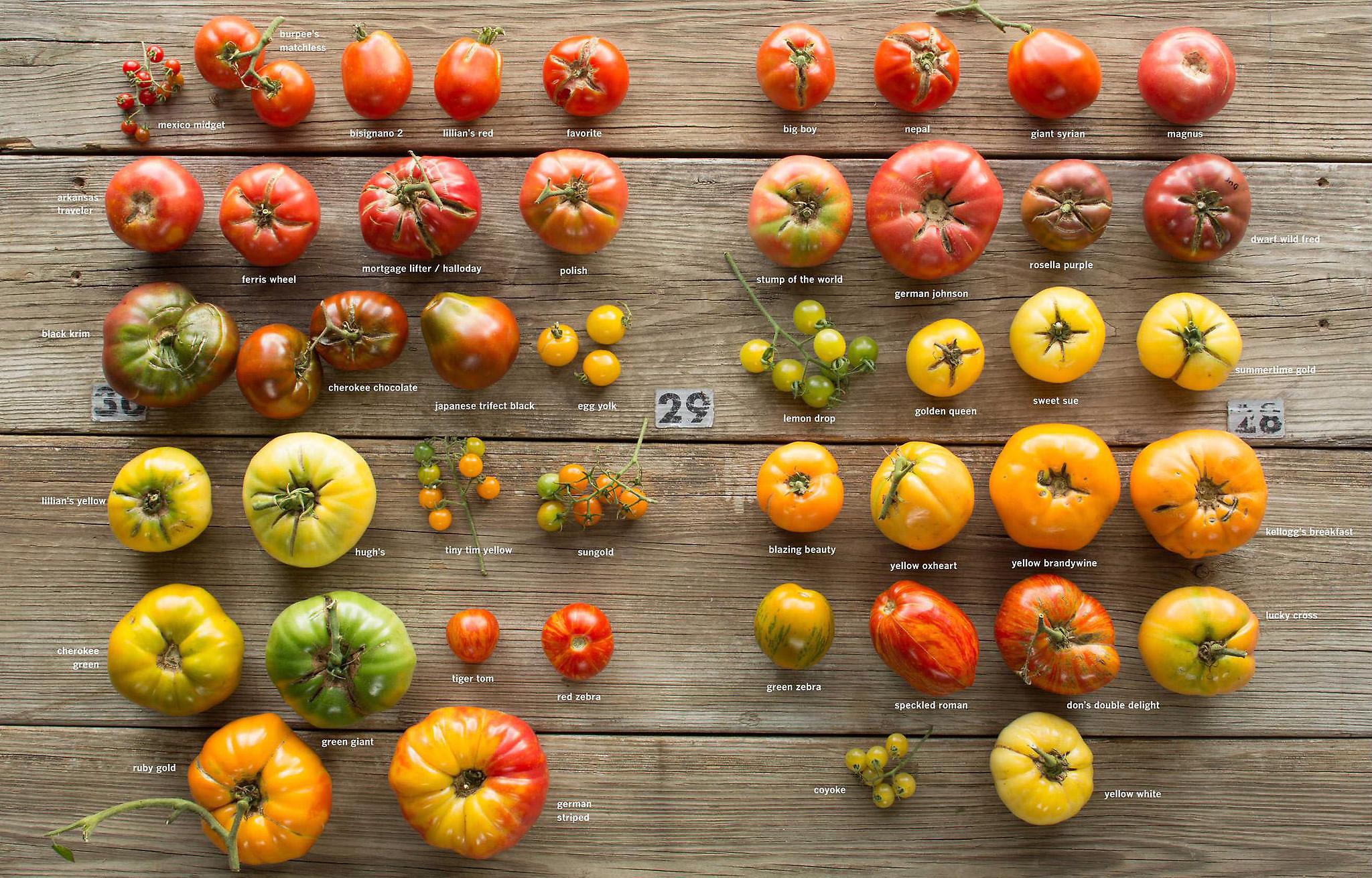There is a new unsung hero in our midst: the seed saver.
According to the Food and Agriculture Organization of the United Nations, more than 90% of crop varieties have disappeared from farmers’ fields globally since the turn of the 20th century. This dramatic decline in agrobiodiversity has been accelerated by large-scale farmers continuously turning to a more predictable homogenized offering of genetically uniform, high-yielding varieties.
To put it in perspective, three quarters of the world’s food is generated from just 12 plant and five animal species. Even more, only three plant species- rice, corn and wheat- contribute nearly 60% of all plant-based calories and proteins. This loss means that our food supply is increasingly reliant on a shrinking selection of crops, and when we put all of our seeds and livestock in one basket, they become especially vulnerable to pests, disease, and climate change.
In October 1975, around the birth of the farm-to-table movement, the Seed Savers Exchange (SSE) was born. Diane and Kent Whealy started this collective after Diane’s grandfather passed along the seeds of two plants their ancestors brought over from Bavaria when they emigrated to the US a century earlier. Their mission: to preserve and circulate old varieties of seeds no longer cultivated and at risk of genetic erosion. Today the SSE maintains a collection of over 20,000 plant varieties, the bulk of which is stored in an underground freezer vault.
Each year the non-profit grows select varieties to refresh their seed supply. Their Evaluation Team maintains records of each variety’s traits, constantly updating descriptions and checking for inconsistencies. SSE truly celebrates the rich cultural stories that envelop their seeds with an in-house historian that researches each variety, documenting its history and the lives of the people who brought it to their collection.
Craig LeHoullier learned of the Seed Savers Exchange a decade after its inception and immediately started experimenting with their heirloom tomato varieties. “Switching from mostly hybrids to mostly heirlooms felt a bit risky,” LeHoullier wrote in the preface of his recent book Epic Tomatoes: How to Select & Grow the Best Varieties of All Time. “If one were to take the words of many of the catalogs as written, anyone who didn’t grow mostly or exclusively hybrid varieties was doomed to gardens of diseased or dead plants with disappointing yields.” Over three gardening seasons, LeHoullier grew some of the most highly regarded hybrid tomatoes alongside an even larger selection of non-hybrid and heirloom varieties. “The results I obtained clearly showed that the ‘must grow the hybrid’ contention was just not true. The non-hybrids/heirlooms I grew equaled or out-yielded the hybrids in general, with far superior flavors and variety… with the benefit of being able to save seed for the next year’s garden.” Since then, LeHoullier has been a longtime adviser to the SSE and has grown over 1,000 heirloom tomato varieties, enthusiastically sharing his seeds with their 13,000+ member network.
Three decades after SSE was formed, a librarian named Ken Greene from the small town of Gardiner in upstate New York (a neighboring town of HowGood’s research headquarters!) took a model most of us know so well, adapting it to a blooming seed-saving venture: members “check out” seeds from a catalog to grow in their home gardens in the spring, then “return” the saved seed from mature plants in the fall. The Hudson Valley Seed Library quickly flourished.
The company offers heirloom and open-pollinated seeds for vegetable, flower, and herb varieties, many of which they grow themselves. The heart of the organization is certainly its small organic farm located in Accord, New York, tucked away in the scenic Rondout Valley between the Catskill Mountains and the Shawangunk Ridge. A seed sanctuary of sorts, there they cultivate three acres of production and trial gardens, producing hundreds of pounds of seed each year while learning about new varieties to offer up to the community. They’ve signed the Safe Seed Pledge and adhere to Vandana Shiva’s Declaration of Seed Freedom, denying corporations’ the right to own seed patents and recognizing “Seed Freedom as the birth right of every form of life and the basis for the protection of biodiversity.”
The Hudson Valley Seed Library also commissions diverse works of art from local artists to grace their packaging each year, sifting through hundreds of applicants and eventually settling on about twenty to design a unique work for a new variety. Most of the artists are avid gardeners themselves, wholeheartedly understanding and easily communicating the mission of the group through their art.
The tireless work of such member-driven organizations has greatly encouraged the resurgence of biodiversity, bringing scores of heirloom fruits, herbs and countless vegetables back onto our plates. Heirloom seeds are now widely used by several national seed companies, small farmers who supply local and regional markets, chefs and home gardeners alike. This is certainly a far cry from the genetically modified monocrop seeds produced by large corporations, but in order to truly take root and regenerate our food system, it needs to be adapted in a much larger way. In the meantime, let’s enjoy, as LeHoullier puts it, “[our] incomparable selection of historical varieties that have been preserved through the efforts of countless gardeners.”











